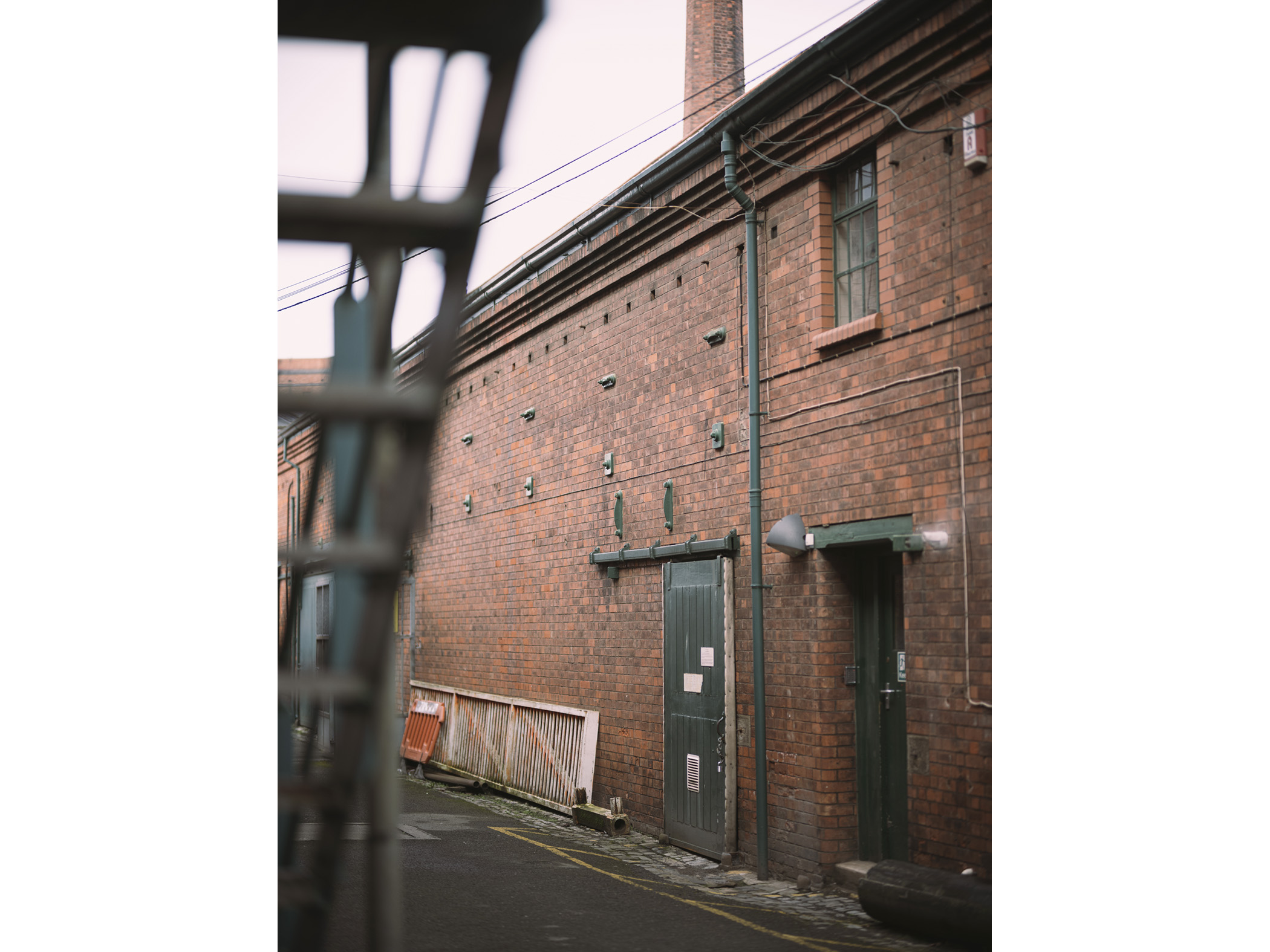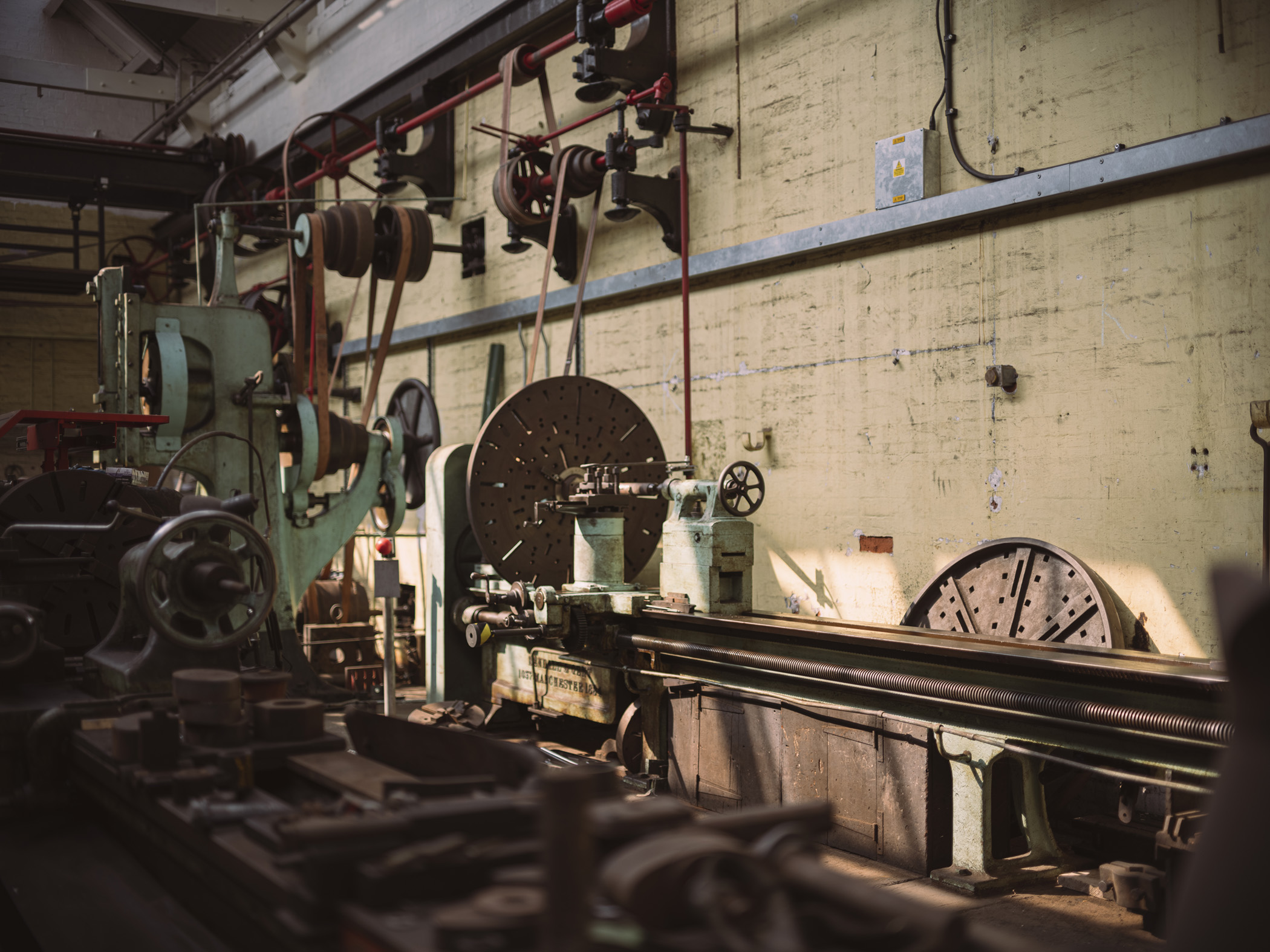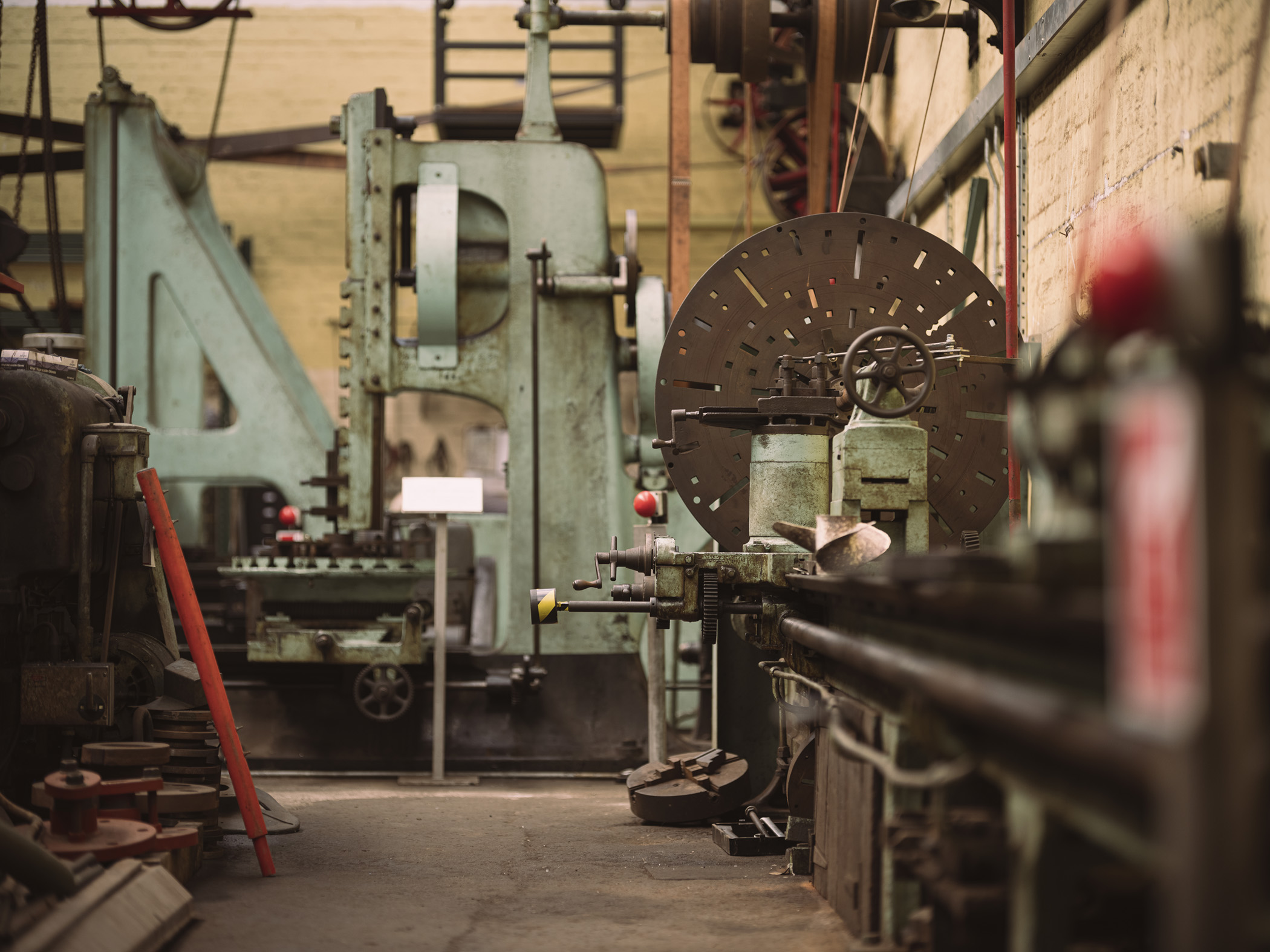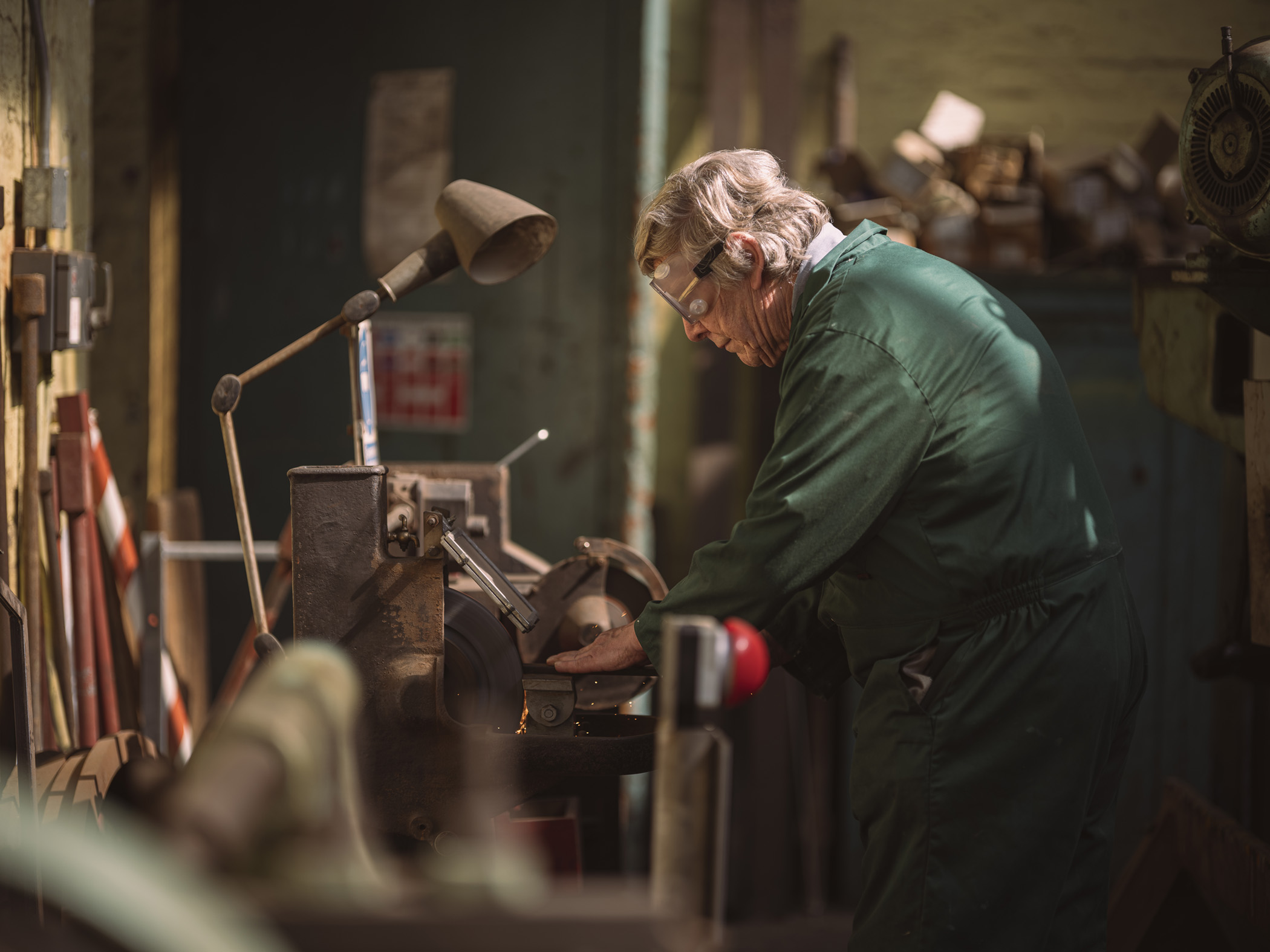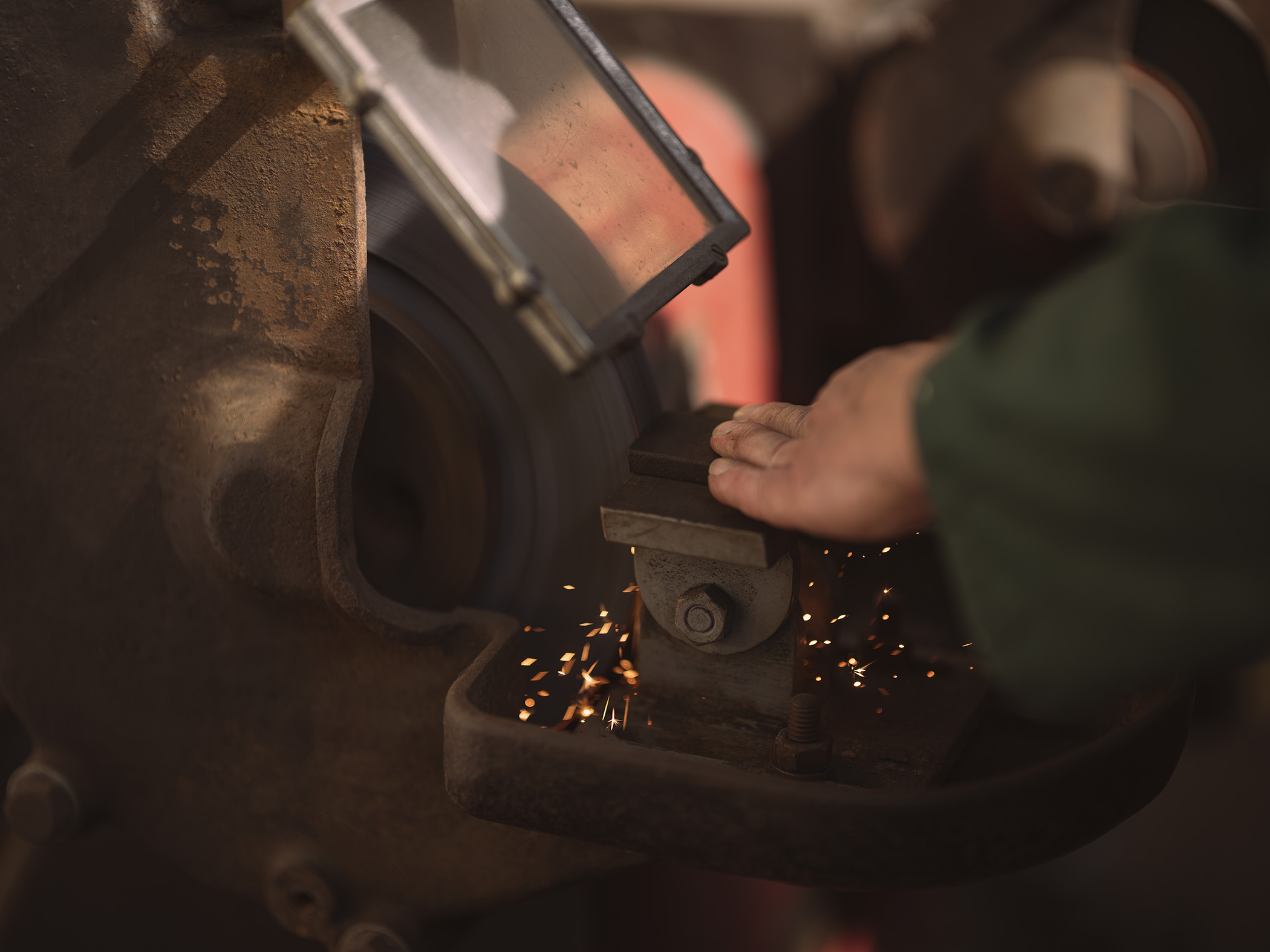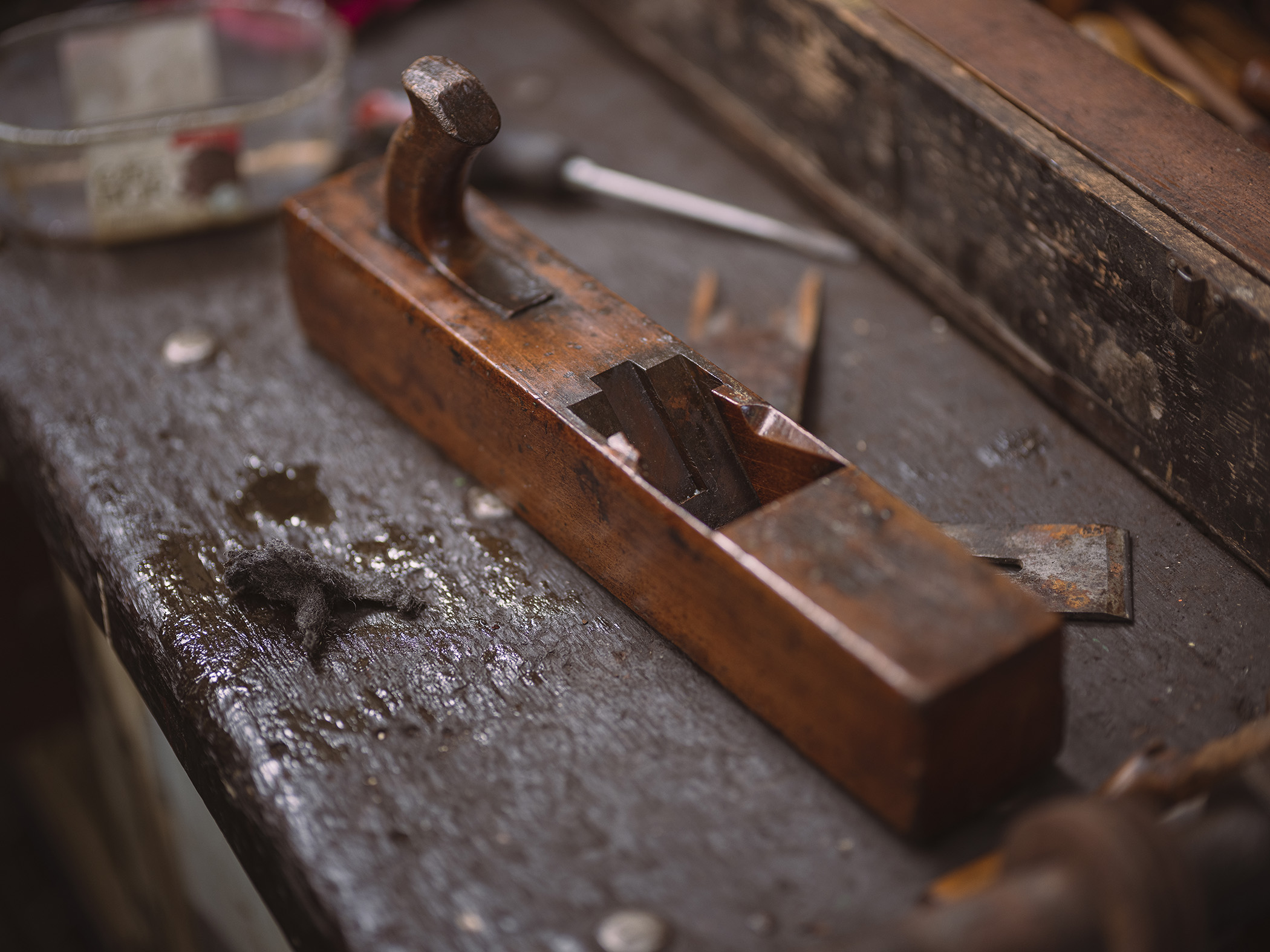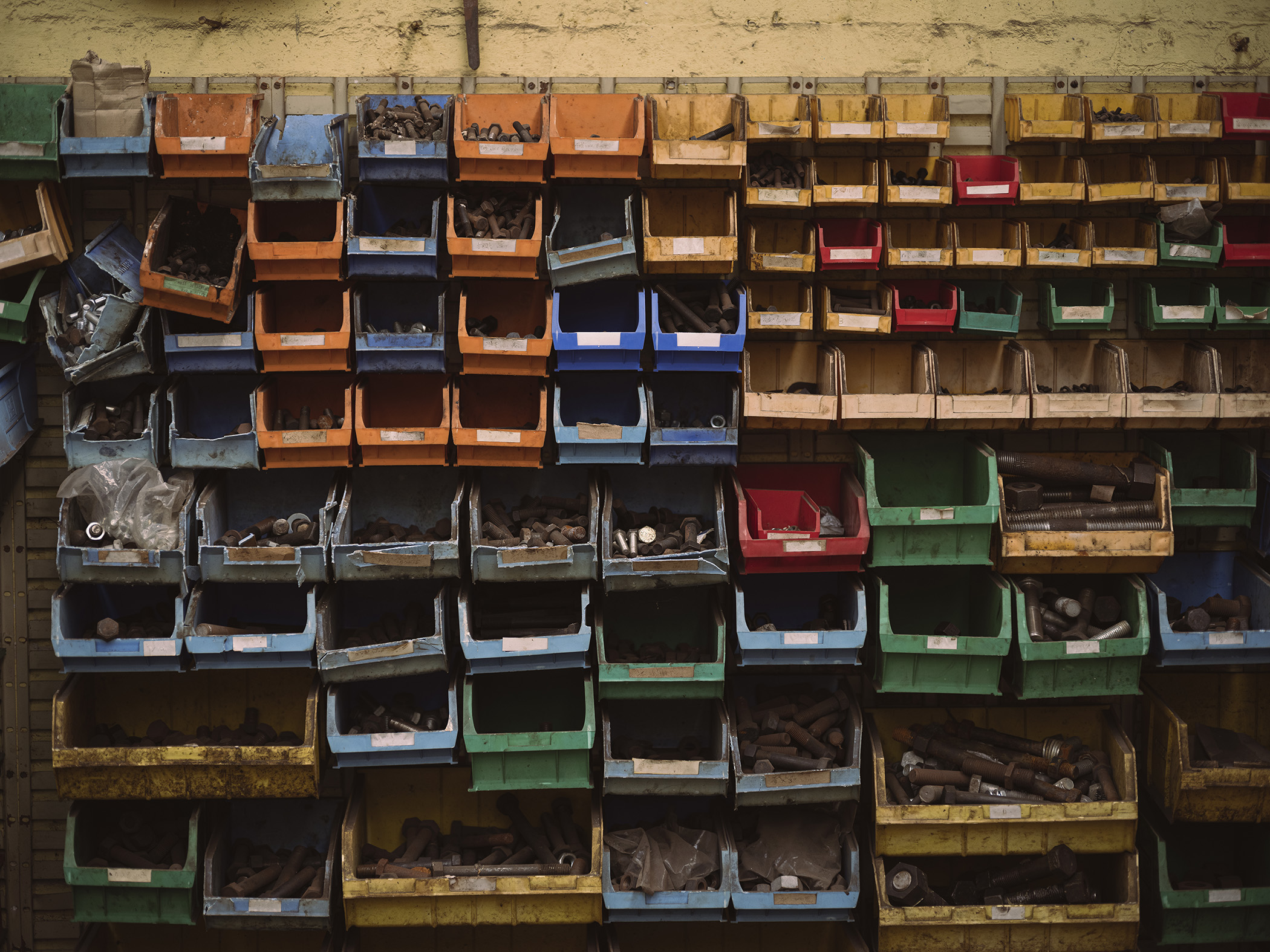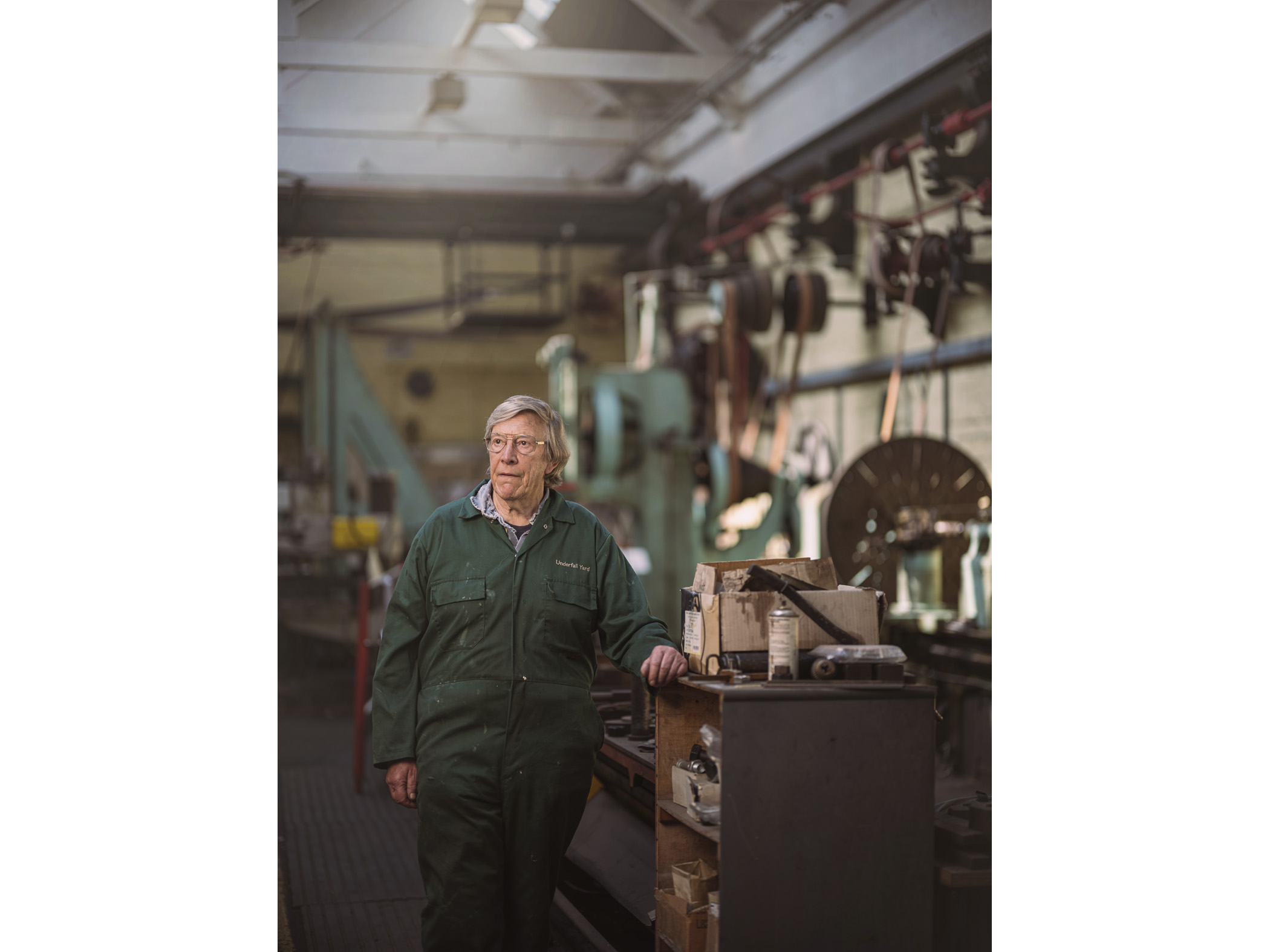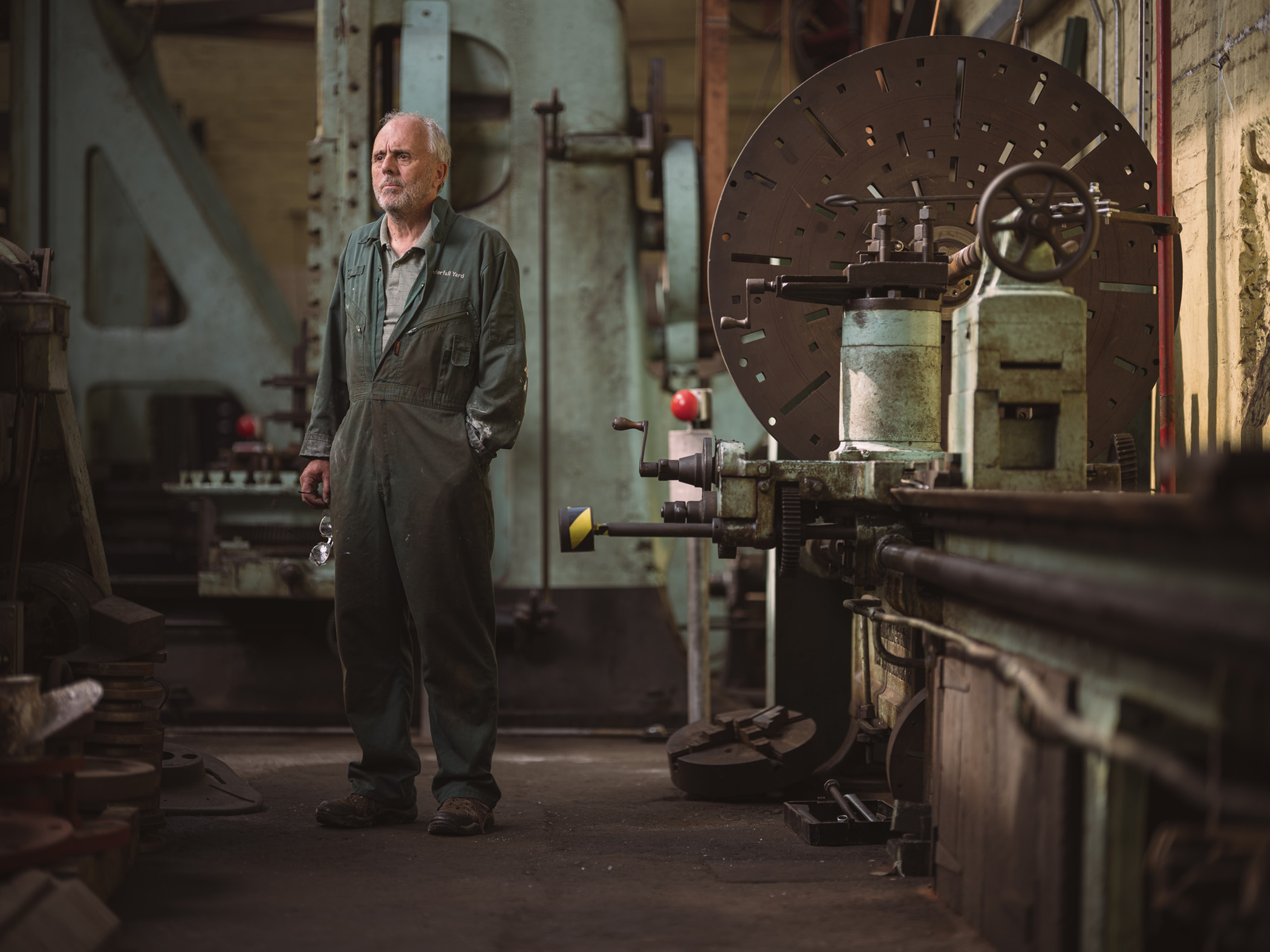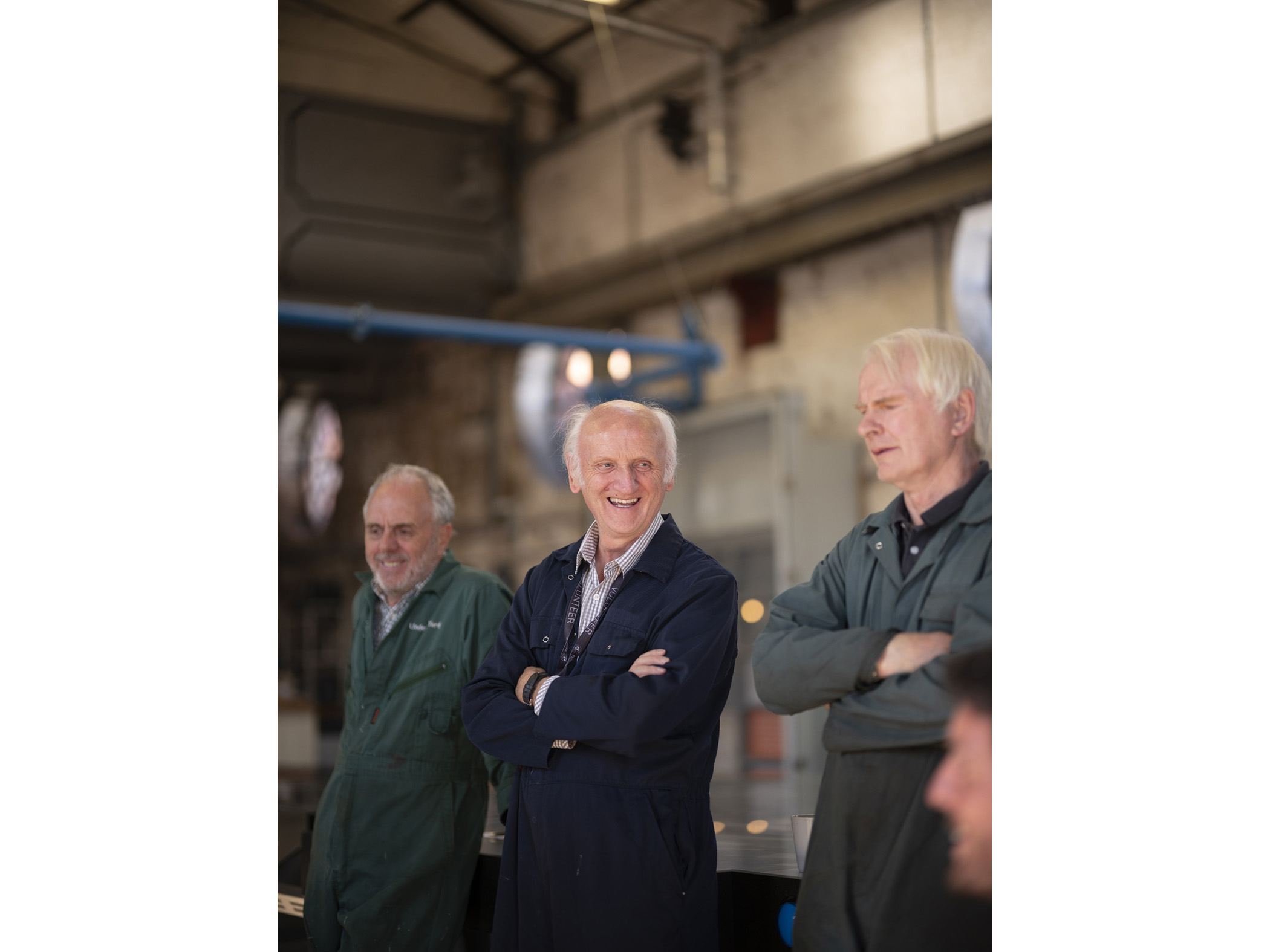Underfall Yard
Bristol Harbourside, September 2021
It can sometimes feel like every major engineering project in Bristol has, at some point, had the input of Isambard Kingdom Brunel. The sluice system housed at Underfall Yard - still in use today to prevent the floating harbour filling up with silt - was designed by the unstoppable Isambard. Is it a testament to the man that his works are still such a draw for many. For volunteers it allows them to spend more time at close quarters to his engineering legacy.
Underfall Yard is not "just a shipyard", director Julie Sienesi is keen to point out, "it’s so much more. It’s a hive of activity for the harbour master. It’s the centre of the harbour. We’ve got the sluices - all that Victorian technology is still actually working - still stopping Bristol from flooding or sinking." Prior to the sluices the floating harbour had to be dredged regularly to stop it filling up with silt and mud. "Although we have boat builders and ships coming out we have so many more marine activities in all the units. And people don’t realise all the work that’s being done there because quite often the doors are closed." And alongside these, set back from the water and hidden from immediate view, stands the dock maintenance workshops. Dating back to the 1880s the workshops are still, partly, in use. Many aspects of the building and machinery are Grade II listed and the Underfall Yard Trust, amongst everything else, maintains all of this. With a small team of paid staff the Trust relies heavily on its volunteers.
One group are often found in the large machine shop. As you pull to one side a heavy sliding door you're greeted by giant relics of the industrial revolution. Simultaneously silent while also filling the air with the sounds of grinding and crashing metal. Drive belts extend up from car sized blocks of iron, industrial vines that appear to crawl up the outer walls before disappearing into a small room at the opposite end. Although no longer powered by coal the building still seems to carry the odours of steam and grease. The look, feel, and smell transport you back to a fictional Grandad's shed, albeit on a suitably Victorian scale. The volunteers here are tasked with maintaining the machine shop and its listed collection. They come from a variety of backgrounds, surprisingly not all engineering, and are drawn to the Underfall by the history and variety of work.
David, John and Mark are in the machine shop, their green worksuits almost offering camouflage against the similarly painted machines. "We've all had desk jobs but when you retire it’s nice to do some hands on stuff" David explains, "Here there’s a good balance, it’s hands on but it’s feasible for someone not with an engineering degree but a sense of how things work". Mark, agreeing, adds "I was looking for something totally different from paperwork. I spent several years tinkering in the garage, making things, learning how to do different things and I thought let’s get out, find somewhere that is compatible with my interests and this is what I found."
It's this attitude that brought the machine shop back to life. Until recently the imposing machines were non functional. "A lot of the machines were" Julie explains. "The ones that we show off weren’t working, all of the line-shafting had been disconnected, and they got them all up and working again". The line shafts run high up along opposite walls of the shop with belts looping down to distribute the power from, originally, a 50bhp Taynge engine. In 2016 a grant from the Heritage Lottery Fund helped Underfall Yard fit a new hydraulic engine to turn the line shafting. "And it all followed from there" says Julie. "They spent ages on the big planer and the punch and shear. But everyone was a bit frightened of all the machines so it was a real learning curve. They’re big machines, they’re quite forgiving as well." At the start the volunteers were using toothbrushes, making slow but careful progress. Conservationists were brought in to consult on the restorations however, and soon the team had more confidence and direction. "Quite a lot of it is brute force and not precision engineering" as John puts it and Mark agrees "it’s pretty difficult to balls anything up!"
The machines are robust. To say they're built like a tank would be accurate - they weigh around the same. So when lockdowns prevented the volunteers from coming to the Yard there wasn't, thankfully, a detrimental effect on them. And it hasn't been a complete shutdown, "The volunteering stopped and started, so we had little bits inbetween." Julie says. "We have around 50 volunteers. We’ve got the ones that actually got the machines up and running and do various maintenance bits and pieces and then we have the front of house volunteers who are the face of the Underfall Yard. People have really missed them. We have people that do research for us, we have people who write articles for us, we have somebody who comes in a makes paintings for us. So all the bits that they do are huge." When it comes to their place in the yard she's unequivacol - "They're incredibly important. It’s hard to actually define how important on so many different levels."
The draw for the volunteers to Underfall Yard feels obvious. Its past played a fundamental role in making the floating harbour what it is today. And that same technology ensures a present - and a future - not just for Underfall Yard but the floating harbour as a whole. While there are many places that allow volunteers to immerse themselves in history there are few that are also writing their place in it as well. But with all this being said there is another aspect of volunteering that, for many, is what attracts them. Much of the work in the machine shop is divided into smaller tasks that each volunteer takes on, each contributing to the wider project. Almost inevitably a bond is formed between them, perhaps one that some didn't expect to make. Or at least it wasn't something they initially set out to find.
Do people come in to volunteering for the camaraderie or this just a happy by product? "It's a bit of both", David answers, "working with people you’ve not met before and doing something you’ve not done before. It's something I imagined would be part and parcel of it". People are drawn to the sense of community. Fundamentally all volunteering boils down to the same principle - giving up your experience and time to help others. And so volunteers are ceollectively working towards that same goal. "That idea of comradeship, of getting your hands dirty, there’s not much of that about any more. I’m from South Yorkshire so in mining, engineering, and steel working there are whole groups of men whose lives were very connected and relied upon each other. There’s a certain social side of that, not just having a chat, that way of working together that gels people". John agrees "People used to go to a job, say down the mines, and you were there til you retired. And you used the company facilities, you played in the band, you went to the dances". This sense of community with collective goals is mirrored in many areas of volunteering. As David puts it, "You feel like everyone is fitting in to the right place and you start to notice that everyone knows their job and they’re doing it. By virtue of that you’re like a jigsaw that locks together. And when things work well that’s not always an experience that you get nowadays and that’s something that I wasn’t necessarily expecting and I really like about what we’re doing now".
For all its history Underfall Yard is as important to Bristol today as it's ever been. "There's a little bit of nostalgia here that goes along with it", David explains, "but certainly the sense of a team working together, it’s a real thing that’s happening now, not just reliving something".


